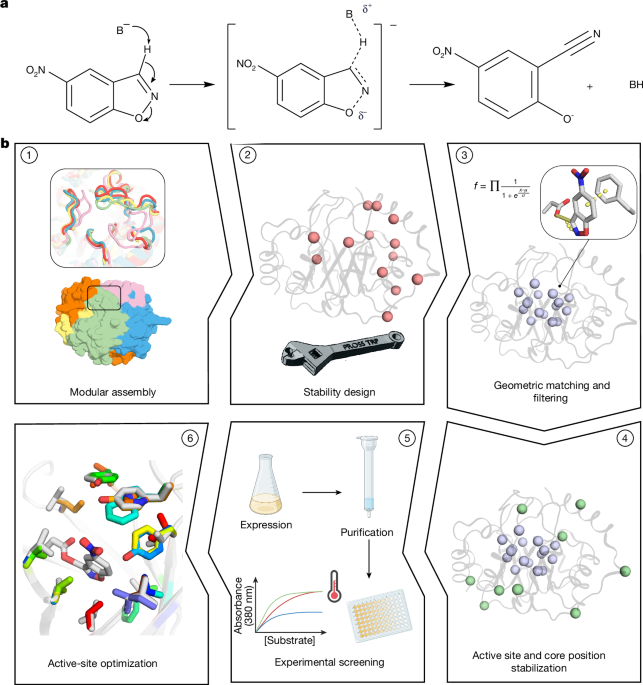
""The study presents a fully computational workflow that designs efficient enzymes in TIM-barrel folds, significantly improving efficiency without needing extensive experimental optimization.""
""Three Kemp eliminase designs achieved efficiencies over 2,000 M-1 s-1, with the most efficient demonstrating catalytic efficiency of 12,700 M-1 s-1 and stability over 85C.""
This article outlines a comprehensive computational workflow for designing high-efficiency enzymes in TIM-barrel folds, overcoming traditional limitations found in enzyme design. Despite challenges in past designs, the new methodology resulted in breakthroughs with Kemp eliminases, achieving unprecedented efficiencies exceeding 2,000 M-1 s-1, with the peak design showcasing 12,700 M-1 s-1 catalytic activity and exceptional stability beyond 85°C. The study emphasizes the potential of computational approaches to generate efficient enzymes that compete with natural variants, challenging established assumptions about enzyme design and functionality.
Read at www.nature.com
Unable to calculate read time
Collection
[
|
...
]